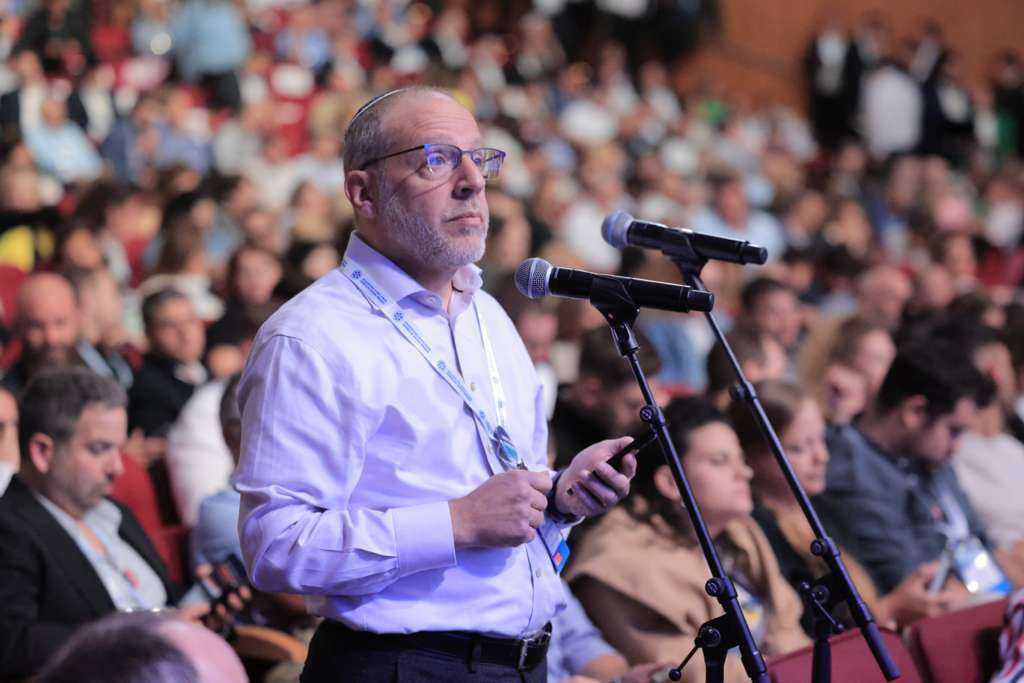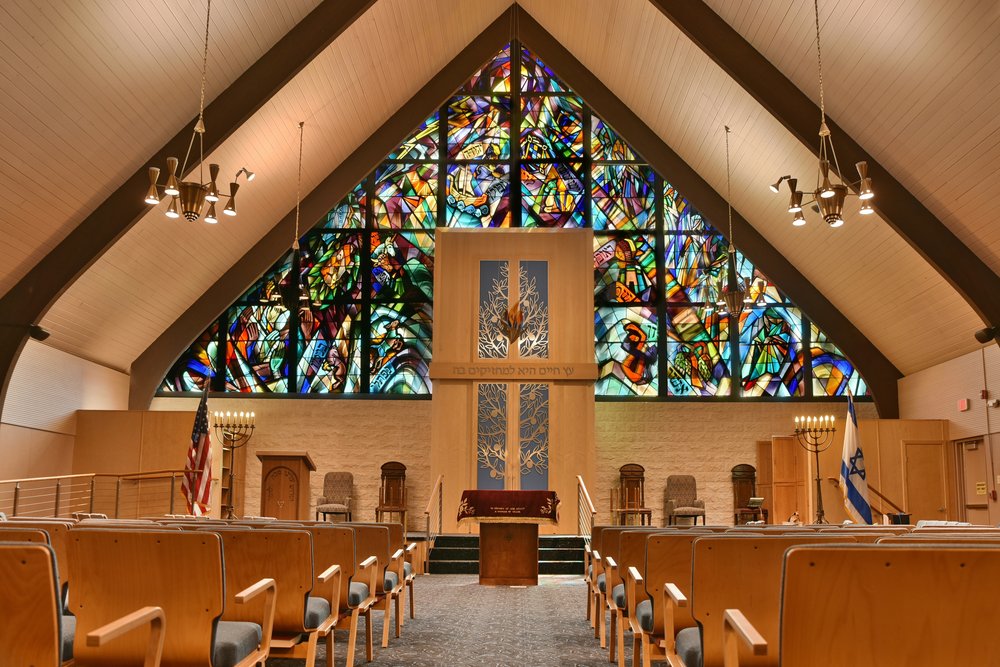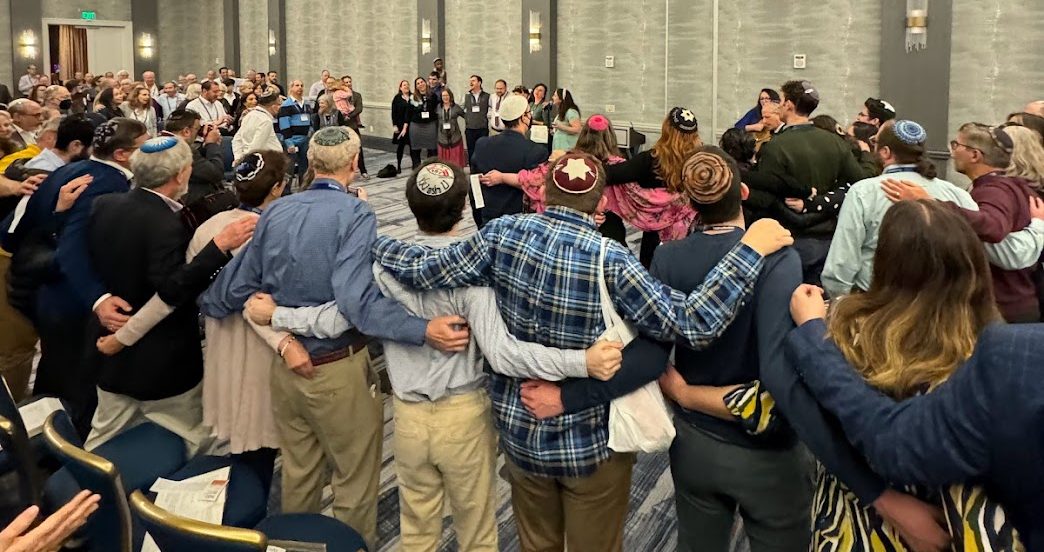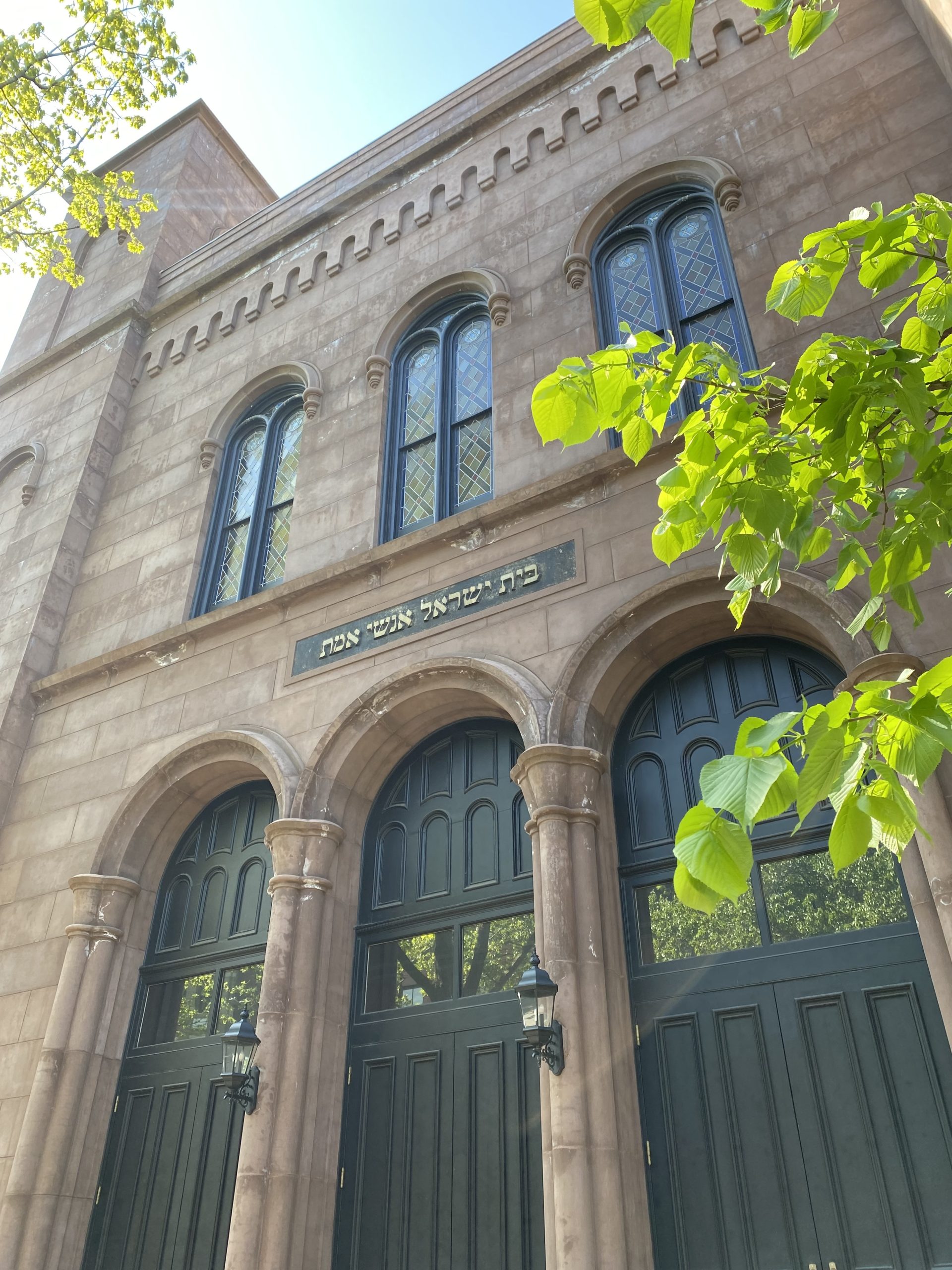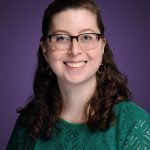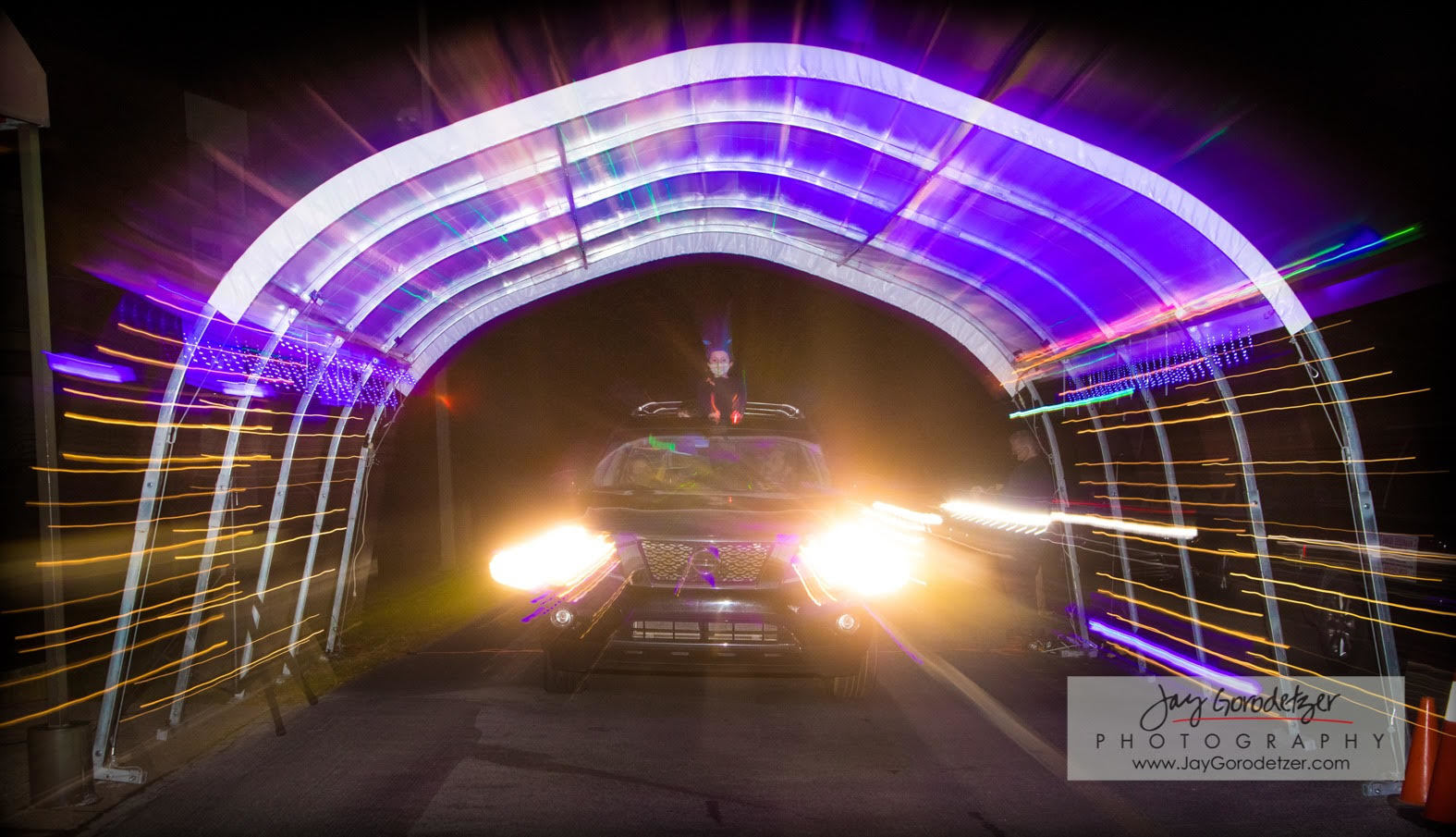
On Hanukkah, the shammash is the assistant that brings its one small light to the surrounding candles, growing the light into much more than how it began. As Hanukkah 5781 draws to a close, USCJ synagogues have been stepping into the role of shammash for their members, creating innovative programs to bring their communities together at a time when coming together is most needed.
On the first night of Hanukkah, Har Zion Temple in suburban Philadelphia celebrated with “A Hanukkah Extravaganza.” The drive-thru program honored the essential workers in the congregation, paid homage to hometown heroes, collected clothing and books for children of all ages who lack access, and supported a start-up business by hosting a kosher food truck. Dreidels, glow sticks, and sufganiyot were distributed to the more than 500 people in attendance.
The night was truly lit up — from performers with LED lights and fire, to the lights from vehicles of first responders, to the candles of the congregation’s menorah — as the community shared in the recitation of the Hanukkah blessings. It was a magnificent night to remember!
On the sixth night of the holiday, approximately 200 people gathered at Temple Ramat Zion in Northridge, California for a Hanukkah ‘Car-nival.’ In a story about the event for The Jewish Journal, Rabbi Ahud Sela expressed that the synagogue was motivated to hold the Car-nival “because even in these dark times, it is important to stay positive and hopeful, and we can do that by celebrating the warmth and joy of Hanukkah.”
The evening included a fire dancer, games that could be played from the cars, and Hanukkah treats served car-hop style. Participants were also asked to bring new socks to the party to be donated to Meet Each Need with Dignity (MEND), a congregation tradition.
As Rabbi Sela explains, it is now more important than ever to shine light on others and help those in need around us — to be a shammash in our communities.




